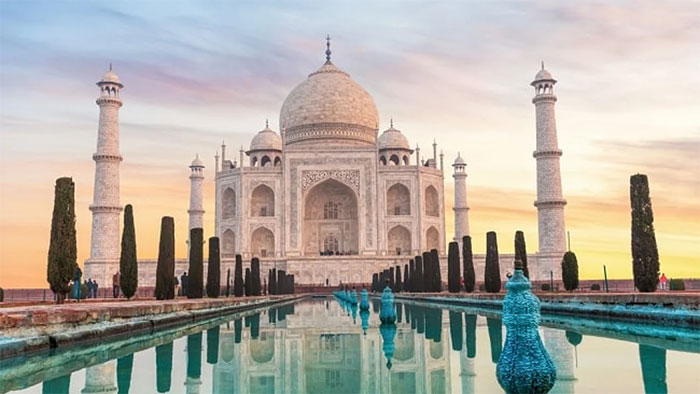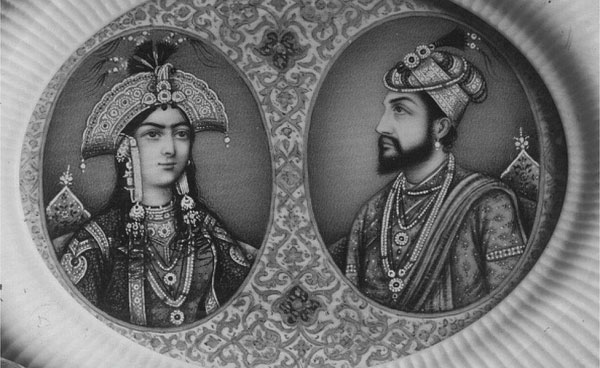The secret rooms are locked at the Taj Mahal in India
More specifically, Rajneesh Singh told the court that he wanted to test the hypothesis of Hindu historians and devotees who claim that the rooms contain a temple dedicated to the god Shiva.

The Taj Mahal is the symbol of India.
The Taj Mahal is essentially a 17th-century riverside mausoleum in the city of Agra, built by the Mughal Emperor Shah Jahan in memory of his queen Mumtaz, who died giving birth to their 14th child. . Beautiful memorial - built of brick, red sandstone and white marble. It is one of the biggest tourist attractions of India.
However, Mr Singh said: "We should all know what's behind these rooms."
Most of the rooms that Mr. Singh suggested opening are located in the underground area of the Taj Mahal. According to many experts, there is nothing special in these rooms.
Professor Ebba Koch, a leading authority on Mughal architecture and the author of a study on the Taj, visited and photographed the rooms and passages of the monument during the course of the study.
According to Ms. Koch, the underground rooms Mr. Singh mentioned are called tahkhana. They are often used in the summer and are connected by a corridor overlooking the river.
Ms. Kock said the area has seven rooms overlooking the river through large archways. There are also 6 square rooms and 2 octagonal rooms. The rooms are decorated with patterns with stars arranged around a medallion in the center.
"This is an open space, often used by the king and his entourage to rest when visiting the temple," Professor Kock said.
Underground corridors overlooking the riverbank are a typical architectural feature of the Mughal dynasty. An example of this architecture can be found at a fortress of the Mughal period in the city of Lahore, Pakistan.

Emperor Shah Jahan and Queen Mumtaz Mahal.
Emperor Shah Jahan used to go to the Taj Mahal by boat on the Yamuna River. He will dock at the pier and enter the mausoleum through wide steps known as ghats.
"I remember seeing beautifully decorated corridors when I visited this place. These corridors lead to large rooms. It was definitely a passage reserved for the emperor," Ms. Baig recounted the trip. visit his Taj Mahal from 20 years ago.
Growing up in Agra, historian Rana Safvi remembers that the underground chambers were open to visitors until a flood in 1978. "Water flooded the memorial, some of the underground rooms were closed. scale and there were some cracks. After that, the authorities closed the rooms. There was nothing in them,' said Ms. Rana Safvi.
Theories and legends
In India, one of the most representative theories is that the Taj Mahal is actually a temple dedicated to the Hindu god Shiva. Accordingly, after Suraj Mal, a Hindu king occupied the city of Agra in 1761, a Hindu dignitary is said to have petitioned the king to renovate the Taj Mahal into a temple.
Besides, there are also theories that the Taj Mahal was designed by an architect from Europe or that this temple is not intended to commemorate Queen Mumtaz.
In addition, tourists also hear stories about Emperor Shah Jahan executed the architect and those involved in the construction of the Taj Mahal after this work was completed.
In 2017, Sangeet Som, a leader of the BJP party, said that the Taj Mahal was built by "traitors". BJP MP Diya Kumari said that Emperor Shah Jahan stole land from a Hindu royal family to build the Taj Mahal.
According to Ms. Safvi, these theories have increased the political tension in India in the past 10 years.
"A part of right-wing politicians in India in recent times often uses fake news, unreliable historical data along with taking advantage of discontent in the Hindu community," Ms. Safvi said. To share.
- The beauty of the Taj Mahal before the marble pillar collapsed
- Taj Mahal - India
- 18 unexpected facts about Taj Mahal
- The Taj Mahal tomb turned yellow for an extremely ominous reason
- The sultry beauty of Taj Mahal is disappearing
- The mystery of 'plant people'
- Pastoral marketing of rooms
- Unique architecture of the semi-submersible palace floating on the lake
- Strange illness causes people to be 'locked up' in their own bodies
- Unexpected truth about hygiene in the hotel
- Decipher the secret room of medieval priests
- Little secret at world famous landmarks
 Biography of hero Vu A Dinh
Biography of hero Vu A Dinh History of hematology
History of hematology Who is Mr. Tam Da 'Phuc-Loc-Tho' and what does it mean?
Who is Mr. Tam Da 'Phuc-Loc-Tho' and what does it mean? Unbelievable facts about the history of the oil and gas industry: Gasoline used to be cheaper than water, so abundant that it had to be dumped into the river...
Unbelievable facts about the history of the oil and gas industry: Gasoline used to be cheaper than water, so abundant that it had to be dumped into the river...